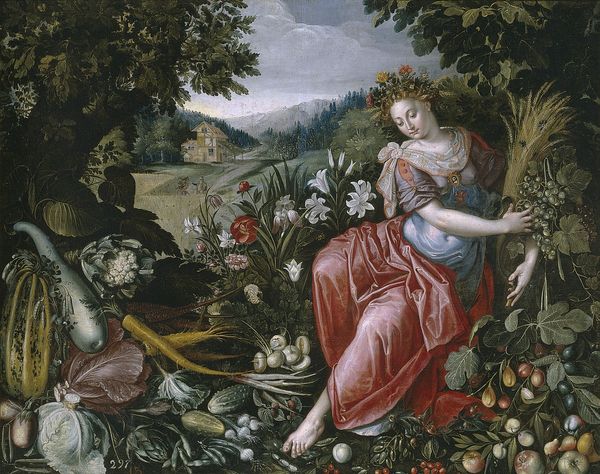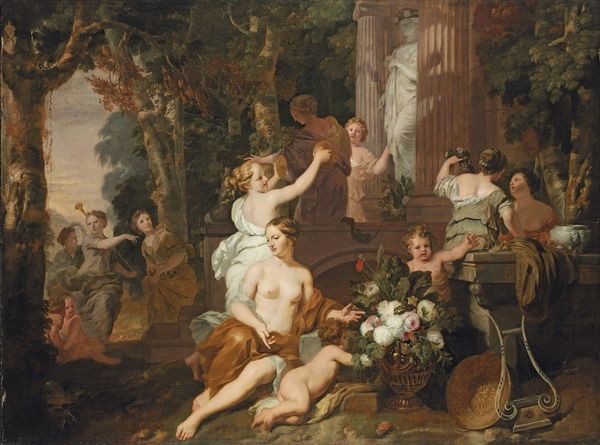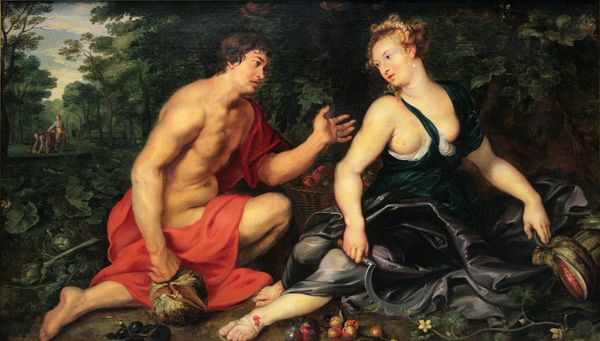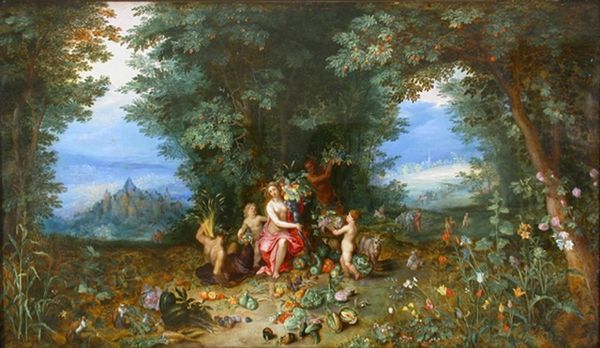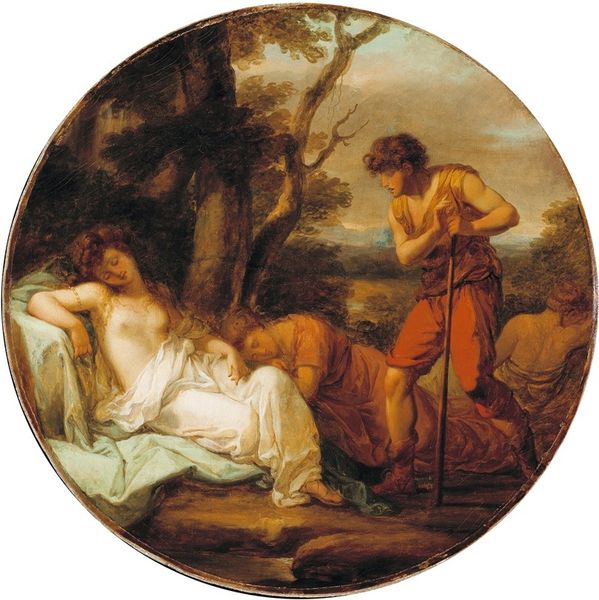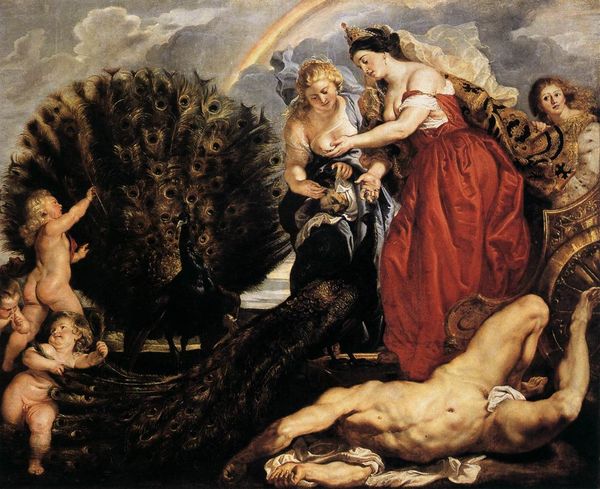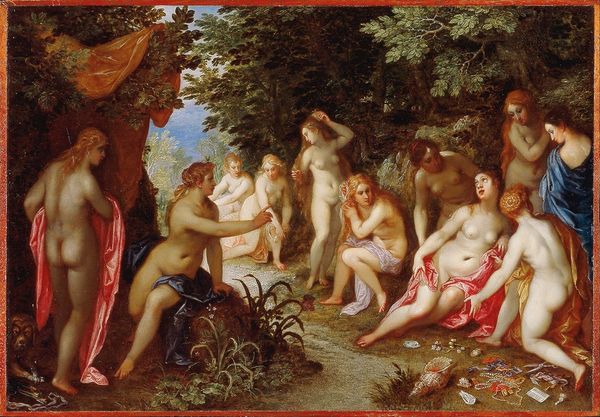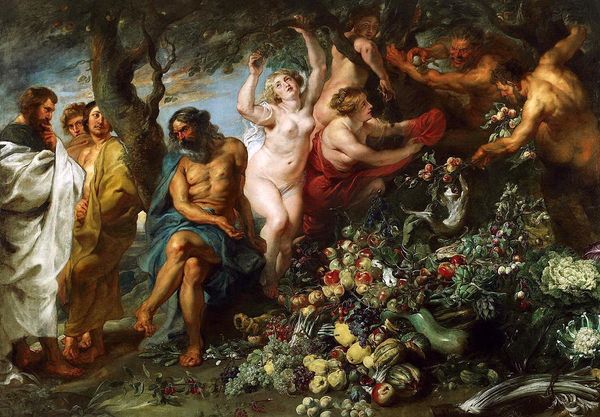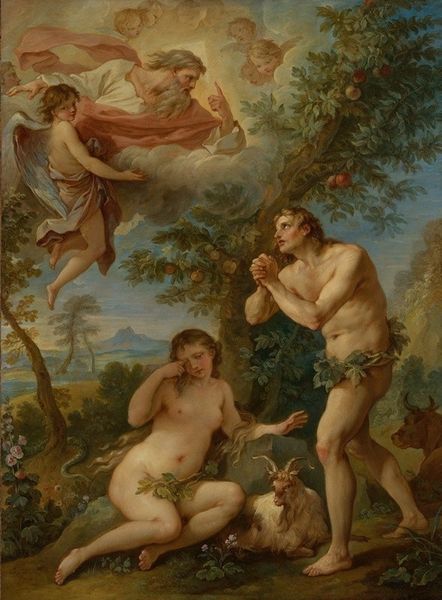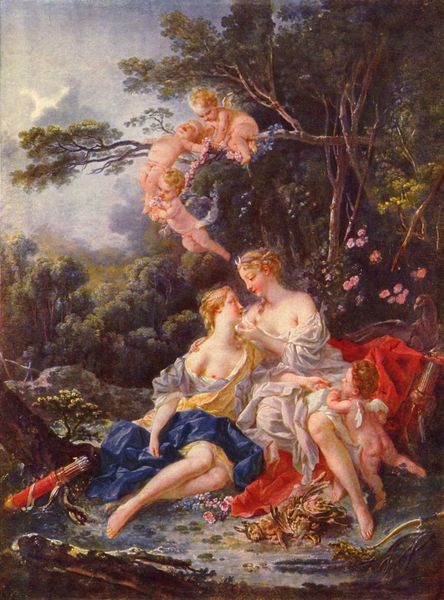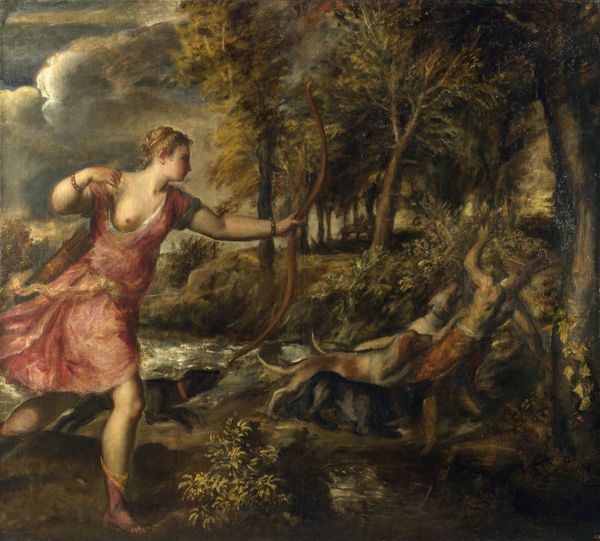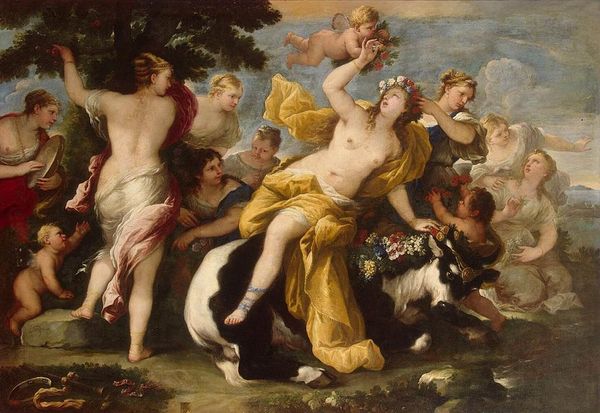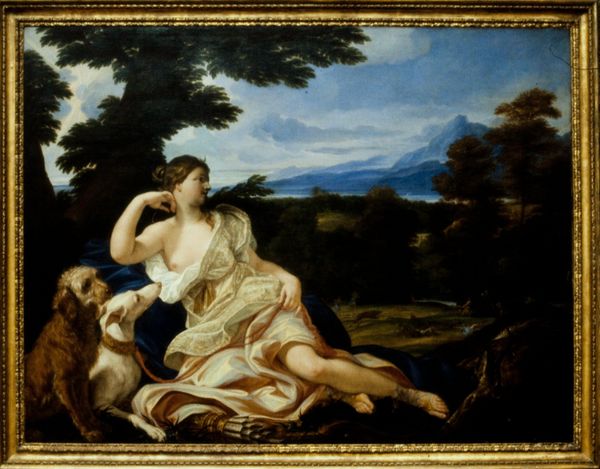
painting, oil-paint
#
allegory
#
baroque
#
painting
#
oil-paint
#
landscape
#
floral element
#
figuration
#
history-painting
#
nude
Copyright: Public domain
Curator: Standing before us is Peter Paul Rubens' "Ceres and Pan," created around 1620 using oil paint. The work presents a vibrant tableau of classical mythology, allegorizing abundance and fertility. What springs to mind when you first view this piece? Editor: Overflow. I feel overwhelmed, but in the most delightful way! The figures practically spill out of the canvas along with all this bounty. There’s a real sensual lushness in those plump forms and shimmering textures. It's so alive. Curator: The abundance is indeed intentional, ripe with symbolism. Ceres, goddess of agriculture, holds the cornucopia, a symbol of unending provision. Pan, the god of nature, adds to this iconography. What cultural echoes do you hear when looking at these symbols of earth and nature entwined? Editor: Oh, the echoes of endless summers from childhood memories. A certain innocence. A reminder that nature keeps producing, even as humanity mismanages resources. It strikes a powerful note with all the environmental conversations we’re having today. And honestly, this tableau really nails the feeling of having had just one bite too many from a delicious pie. Curator: Indeed, the idea of an abundant, fruitful landscape—almost bordering on excess— is a theme echoed across many eras, though rarely presented so sensually as Rubens has here. There are echoes in Arcadian landscapes and harvest festivals... Even the ancient association of earthly abundance and sacred fertility. Editor: The details are doing it for me, though—it isn't just big gestures, like her cornucopia, but those little wormy leaves around Pan's head. Or the texture on Ceres's gown… Those are choices that say a lot about Rubens’s artistic process. Each tiny brushstroke is basically its own sonnet! I also notice that the distant, softer light and diminutive human figures underscore just how lush, and untamed, the world still was then. Curator: Precisely, the dynamism and realism bring these ancient gods down to earth, endowing them with recognizable human emotion and form, even while they remain archetypes of their mythic roles. Rubens truly merges the allegorical with the very, very real. Editor: Seeing such exuberant, painterly mastery displayed is… honestly kind of revitalizing! Reminds me to appreciate all the messiness and wonder that life serves up, the wilder, the better, just like this picture.
Comments
No comments
Be the first to comment and join the conversation on the ultimate creative platform.
